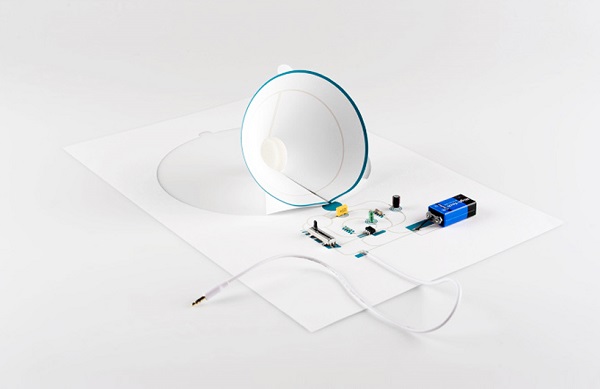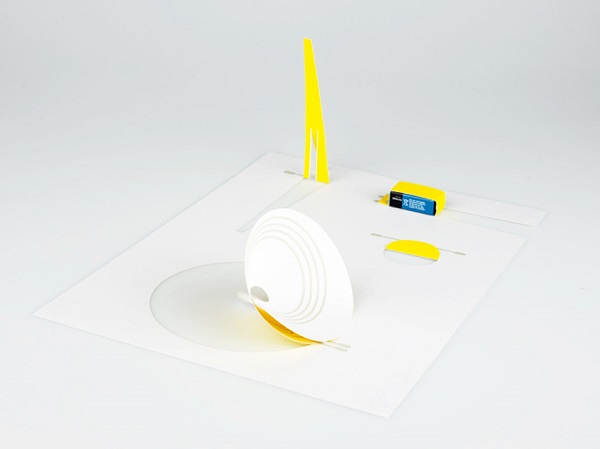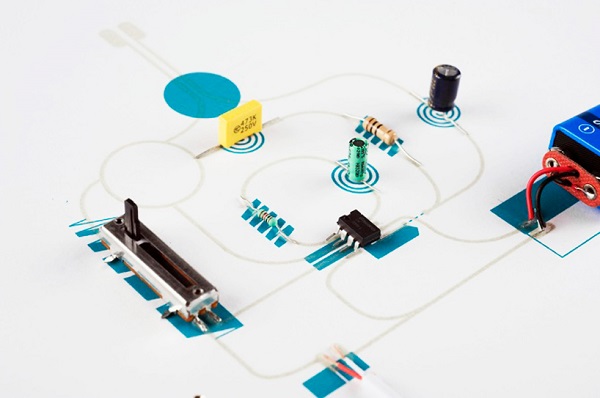While some companies involved in the production of audio equipment are trying their best to create speakers with as intricate of a design as possible, other independent designers realize that simpleness is sometimes the key to most people’s needs.
Coralie Gourguechon is among the designers who prefer straightforward lines and a small number of components when creating anything, case in point being the world’s simplest speaker, which is silkscreened on a sheet of paper. Such devices are usually big, heavy, and built in voluminous enclosures, preferably made out of wood to make the sound resonate better. Gourguechon’s speaker is nothing like that, as it is practically built out of a piece of paper on which electronics are attached and connected via conductive ink. Circuit boards are a thing of yesterday, as on a white background the entire circuitry looks much better.

This designer is not at her first attempt of creating paper electronics. In the past, she has also worked on a paper camera for which she also used a piece of paper and some basic electronic components. The world’s simplest speaker simply represented a way for Gourguechon to perfect her skills.

The paper-cone-speaker depicted here surely looks like something pupils would make in a physics class. When it is turned off, the speaker lays flat. Placing it in the cone position and connecting it to an input turns it on. I’m rather sure you won’t be able to throw a party using such speakers, nor will you drive your neighbors crazy, but for basic needs, this little device seems to be the perfect solution.

A second version of the speaker has also been designed by Gourguechon, this time with a pop-up antenna. As the designer explains, “These electronic modules are patterns that can be arranged in the space of a sheet of paper. The cut allows to deploy a module which represent a mechanical function. The modules feature colorful back indication, whose role is to graphically represent the item. The voids between the modules are used to place the tracks and components needed to make an operating system. The objective of modules paper is to simplify the fabrication of electronic assemblies.”

It’s nice to see how a product designer can breathe new life into a device that hasn’t suffered any major changes for quite a few decades now. I understand that she’s deeply rooted into making electronics, but it would be nice if she designed other things, as well.
If you liked this post, please check this NES speaker dock for iPhone and the aluminum Braven 850 speaker.










